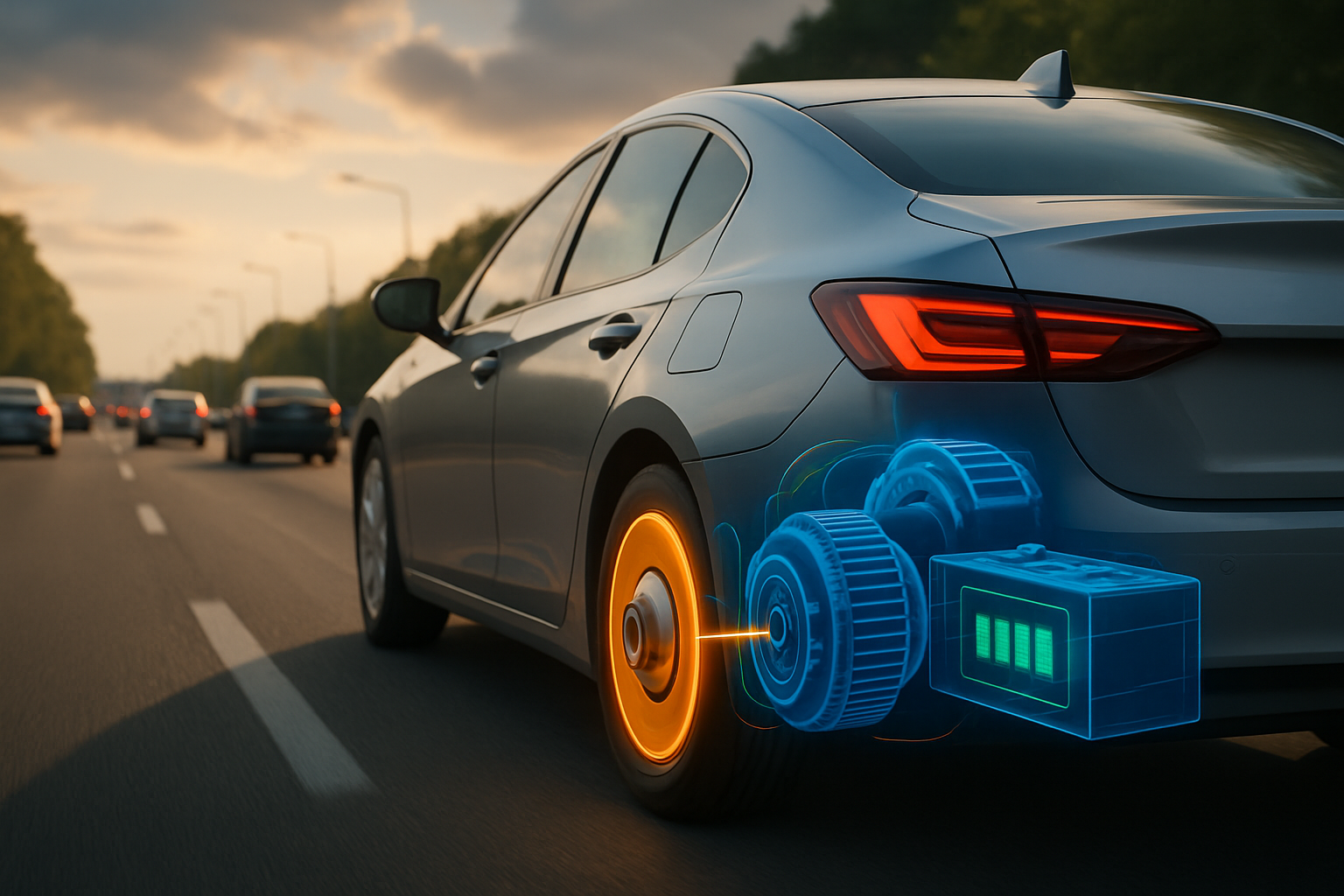Regenerative Braking: Powering the Future of Automotive Efficiency
Picture this: you're cruising down the highway in your car, and suddenly traffic slows. As you ease off the accelerator and apply the brakes, what if your vehicle could capture that kinetic energy instead of letting it dissipate as heat? Welcome to the world of regenerative braking, a groundbreaking technology that's reshaping the landscape of automotive efficiency and sustainability.

The principle behind regenerative braking is deceptively simple: convert the kinetic energy of a moving vehicle into electrical energy during deceleration. This energy, which would otherwise be lost as heat through conventional friction braking, is instead stored in the vehicle’s battery for later use. The result? Improved fuel efficiency, reduced wear on brake components, and a significant step towards more sustainable transportation.
How Regenerative Braking Works
At its core, regenerative braking operates on the principle of reversing the function of an electric motor. When a vehicle is in motion, the electric motor draws power from the battery to propel the car forward. During deceleration, this process is inverted. The motor switches to generator mode, using the vehicle’s momentum to produce electricity that is fed back into the battery.
This system is most commonly found in electric and hybrid vehicles, where it can significantly extend range and improve overall efficiency. However, some conventional internal combustion engine vehicles are now incorporating mild hybrid systems that utilize regenerative braking to power auxiliary systems and improve fuel economy.
The process is seamless from the driver’s perspective. When the brake pedal is pressed, the vehicle’s computer determines how much braking force can be achieved through regeneration and how much needs to come from the conventional friction brakes. In many modern systems, drivers can even adjust the level of regenerative braking, allowing for one-pedal driving in some scenarios.
The Impact on Vehicle Design and Performance
Regenerative braking has profound implications for vehicle design and performance. For electric vehicles, it can extend range by up to 25% in city driving conditions, where frequent stops and starts are common. This efficiency gain allows for smaller, lighter battery packs without sacrificing range, leading to overall weight reduction and improved vehicle dynamics.
Moreover, the reduced reliance on friction braking means less wear on brake pads and rotors, potentially doubling their lifespan. This not only reduces maintenance costs for vehicle owners but also decreases the environmental impact associated with brake dust and the production of replacement parts.
From a performance standpoint, regenerative braking can enhance vehicle control, especially in low-traction conditions. The precise modulation of braking force through the electric motor allows for more nuanced deceleration, improving stability and safety.
Challenges and Future Developments
Despite its benefits, regenerative braking faces several challenges. One of the primary issues is the system’s reduced effectiveness at high speeds or during hard braking, where conventional friction brakes must take over. Engineers are working on improving the power density of electric motors and the energy storage capacity of batteries to address these limitations.
Another area of focus is the integration of regenerative braking with advanced driver assistance systems and autonomous driving technologies. The ability to precisely control deceleration through regenerative braking could play a crucial role in the smooth operation of self-driving vehicles.
Looking ahead, researchers are exploring novel ways to enhance regenerative braking efficiency. One promising avenue is the use of ultracapacitors alongside traditional batteries. Ultracapacitors can accept and discharge energy much more quickly than batteries, potentially allowing for more effective energy capture during short, intense braking events.
The Broader Impact on Sustainability
The significance of regenerative braking extends beyond individual vehicle efficiency. As the automotive industry shifts towards electrification, the widespread adoption of this technology could have a substantial impact on overall energy consumption and emissions.
In urban environments, where stop-and-go traffic is prevalent, regenerative braking could dramatically reduce the energy demands of transportation. This, in turn, could alleviate strain on power grids and reduce the carbon footprint associated with charging electric vehicles.
Furthermore, the principles of regenerative braking are finding applications beyond personal transportation. Heavy-duty vehicles, trains, and even elevators are now employing similar energy recovery systems, amplifying the technology’s positive environmental impact.
Conclusion: A Key Player in Automotive Evolution
Regenerative braking stands as a testament to the innovative spirit driving the automotive industry forward. By turning the act of slowing down into an opportunity for energy generation, this technology epitomizes the kind of creative thinking necessary to address the complex challenges of sustainable transportation.
As vehicles become increasingly electrified and autonomous, regenerative braking will likely play an even more crucial role in maximizing efficiency and performance. It represents not just a technological advancement, but a shift in how we conceptualize energy use in transportation – viewing every aspect of vehicle operation as an opportunity for optimization and conservation.
The journey of regenerative braking from a niche technology to a mainstream feature underscores the rapid pace of innovation in the automotive world. As we look to the future, it’s clear that this ingenious method of energy recovery will continue to evolve, pushing the boundaries of what’s possible in vehicle efficiency and sustainability.





